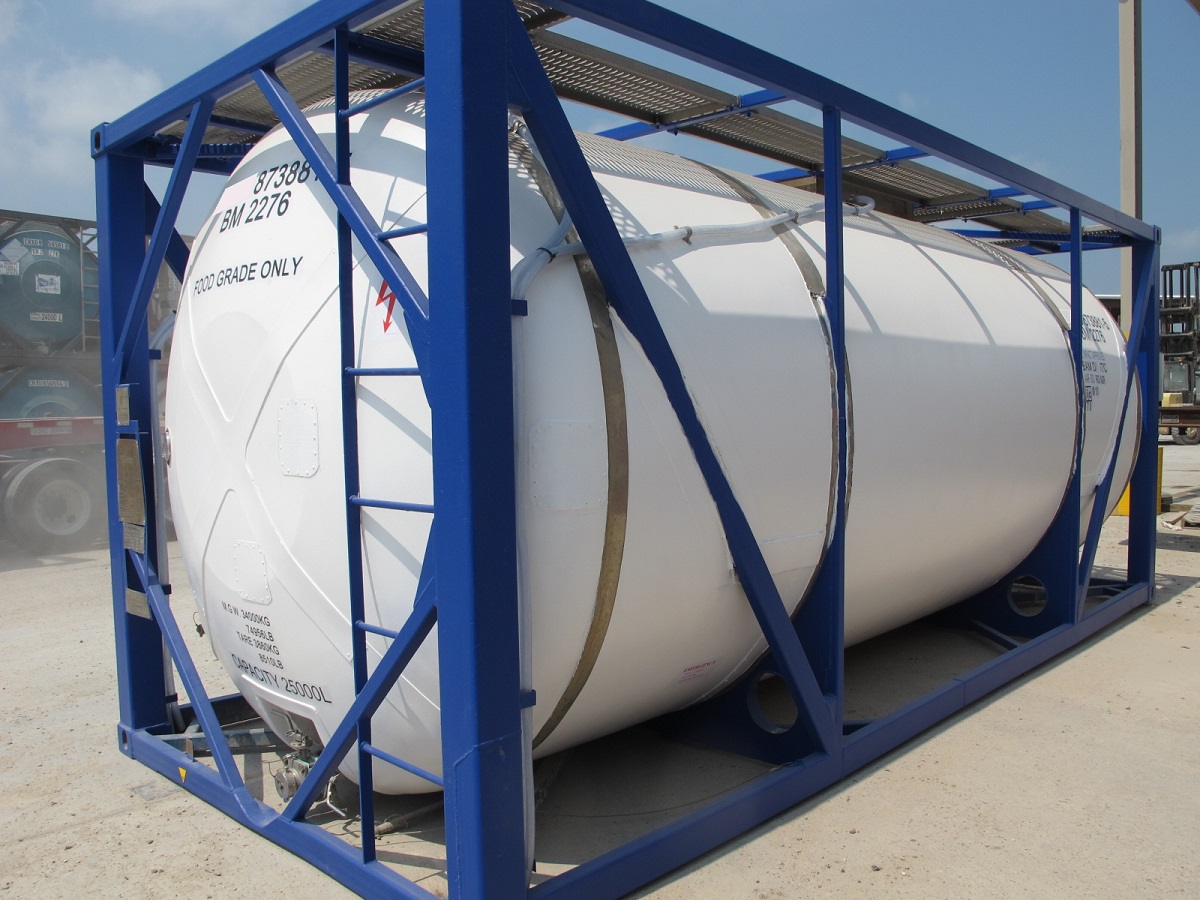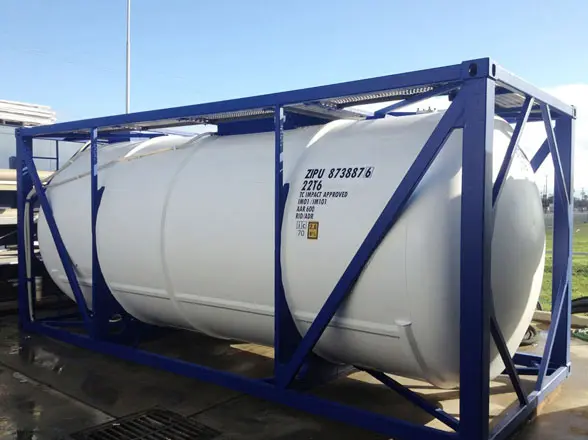In today’s globalized economy, the efficient and safe transportation of food products is more critical than ever. Whether you’re exporting perishable goods like dairy, liquids, or edible oils, maintaining the integrity and safety of your cargo is paramount. This is where food-grade ISO tanks come into play—a modern, reliable solution for bulk food transportation.
In this comprehensive guide, we’ll explore everything you need to know about food-grade ISO tanks, including their design, advantages, regulations, maintenance, and how they can benefit your supply chain. As a leading provider of intermodal solutions, EquipIntermodal.com is here to shed light on how these specialized tanks are transforming the food logistics industry.
What Are Food-Grade ISO Tanks?
Food-grade ISO tanks are specialized, standardized containers designed for the safe transport of edible liquids and food ingredients across various modes of transportation—road, rail, and sea. These tanks conform to international standards (ISO standards) and are constructed with materials that meet strict food safety regulations.
Key Features of Food-Grade ISO Tanks
- Material Composition: Typically made from stainless steel (most commonly 304 or 316 grades), ensuring corrosion resistance and food safety.
- Capacity: Ranges from 14,000 to 26,000 liters (approximately 3,700 to 6,900 gallons), suitable for bulk quantities.
- Design Standards: Comply with ISO 668 and ISO 1496-3 standards, ensuring compatibility with global transportation systems.
- Insulation & Heating: Some tanks feature insulation or heating jackets to handle temperature-sensitive products.
- Safety & Hygiene: Equipped with features like manways, drain valves, and CIP (Clean-In-Place) systems for hygiene and easy cleaning.
Why Choose Food-Grade ISO Tanks?
The decision to utilize food-grade ISO tanks offers numerous advantages over traditional transportation methods such as drums or barrels. Below are some of the compelling reasons why food producers and logistics companies prefer ISO tanks for bulk food transport:
1. Enhanced Food Safety and Hygiene
Food-grade ISO tanks are constructed with food-grade stainless steel, which resists corrosion and prevents contamination. They are designed to meet strict hygiene standards, facilitating easy cleaning and sterilization, thereby reducing the risk of cross-contamination.
2. Cost-Effective Bulk Transportation
Transporting large quantities of food liquids via ISO tanks reduces logistics costs significantly. They enable economies of scale, lowering freight costs per liter or kilogram, especially when shipping internationally.
3. Flexibility and Intermodal Compatibility
ISO tanks are designed to be compatible across multiple transportation modes—road, rail, and sea—without the need for unloading and reloading, streamlining the supply chain.
4. Regulatory Compliance
ISO tanks adhere to international safety and quality standards, making them compliant with food safety regulations such as FDA (U.S. Food and Drug Administration) and EFSA (European Food Safety Authority).
5. Environmental Benefits
Reusability of ISO tanks reduces waste and environmental impact, aligning with sustainable logistics practices.
Applications of Food-Grade ISO Tanks
Food-grade ISO tanks are versatile and suitable for a wide range of food-related liquids, including:
- Edible oils (soybean, sunflower, olive oil)
- Dairy products (milk, whey, liquid dairy concentrates)
- Juices and beverages
- Alcoholic beverages (wine, spirits)
- Syrups and food-grade chemicals
- Sauces, syrups, and concentrates
Design and Construction of Food-Grade ISO Tanks
Understanding the design features of food-grade ISO tanks is essential for ensuring suitability for your specific needs. Let’s explore the critical components:
Materials and Construction
- Stainless Steel: The primary material, typically 304 or 316 stainless steel, for corrosion resistance and cleanliness.
- Inner Lining: Smooth, seamless interior surface to facilitate cleaning and prevent bacterial growth.
- Insulation: Some tanks include insulation to maintain temperature-sensitive products.
- Manways and Valves: Designed for easy filling, emptying, and cleaning, with food-grade gaskets and seals.
Safety Features
- Pressure Relief Valves: To prevent over-pressurization.
- Ventilation Systems: To control internal pressure and prevent product spoilage.
- Locking Mechanisms: To secure lids and access points during transit.
Dimensions and Capacities
- Standard sizes range from 14,000 liters to 26,000 liters.
- Overall dimensions are designed for compatibility with ISO container standards (20-foot or 40-foot containers).
Regulatory Standards and Certifications
Food-grade ISO tanks must meet various international and regional standards:
- ISO 668 & ISO 1496-3: For container dimensions and safety.
- FDA Compliance: For operation in the United States.
- EU Regulations: For food safety and hygiene standards.
- TPED (Transportable Pressure Equipment Directive): For tanks carrying pressurized liquids.
- Cleaning & Sanitation Standards: Regular cleaning protocols and certifications to ensure hygiene.
Partnering with a reputable supplier like EquipIntermodal ensures your ISO tanks are compliant with all necessary regulations.
Maintenance and Cleaning of Food-Grade ISO Tanks
Proper maintenance and sanitation are vital to ensure the integrity of food products and extend the lifespan of your ISO tanks. Here are best practices:
Regular Inspection
- Check for corrosion, dents, or damages.
- Inspect fittings, valves, and seals.
- Ensure safety devices are functional.
Cleaning Procedures
- CIP (Clean-In-Place): Automated cleaning systems that sanitize the interior without disassembly.
- Manual Cleaning: For more thorough cleaning, especially after transporting different products.
- Sanitization: Use approved food-grade sanitizers, following manufacturer guidelines.
Record Keeping
Maintain detailed logs of cleaning, inspections, and maintenance activities for compliance and quality assurance.
Choosing the Right Food-Grade ISO Tank Supplier
Partnering with a reliable supplier is crucial for ensuring product quality, safety, and compliance. When evaluating suppliers, consider:
- Experience and Reputation: Proven track record in food-grade tank manufacturing.
- Compliance Certifications: ISO, FDA, and other relevant standards.
- Customization Options: Ability to tailor tanks to specific needs.
- Maintenance & Support: Availability of servicing, repairs, and spare parts.
- Logistical Support: Assistance with transportation, installation, and commissioning.
EquipIntermodal.com specializes in providing high-quality, compliant food-grade ISO tanks tailored to your logistics requirements.
Benefits of Using Food-Grade ISO Tanks from EquipIntermodal.com
- High-Quality Materials: Ensuring durability and food safety.
- Custom Solutions: Sizes and configurations tailored to your needs.
- Global Availability: Intermodal compatibility for seamless transportation.
- Regulatory Compliance: Meet all international standards.
- Excellent Support: Maintenance, cleaning, and technical assistance.
Cost Considerations and ROI
While the initial investment in food-grade ISO tanks can be significant, the long-term benefits include:
- Reduced transportation costs per volume.
- Minimized risk of contamination and product loss.
- Increased operational efficiency.
- Environmental sustainability through reuse and reduced waste.
Assess your logistics volume and frequency to determine the optimal tank size and configuration for maximum ROI.
Future Trends in Food-Grade ISO Tank Transportation
The industry is evolving with innovations such as:
- Smart Tanks: Incorporating sensors for real-time monitoring of temperature, pressure, and filling levels.
- Sustainable Materials: Use of eco-friendly and recyclable components.
- Enhanced Sanitation: Advanced CIP systems and antimicrobial coatings.
- Digital Documentation: Streamlined compliance and tracking via digital platforms.
Staying updated with these trends can give your business a competitive edge.
Conclusion
Food-grade ISO tanks are transforming the way the food industry transports and stores liquids, offering safety, efficiency, and compliance. By choosing the right tanks and partner suppliers like EquipIntermodal.com, businesses can ensure their products reach consumers in optimal condition while optimizing logistics costs.
Investing in quality, compliance, and innovation in ISO tank technology is not just a logistics decision—it’s a strategic move towards safer, more sustainable, and more efficient food supply chains.
Call to Action
Are you ready to upgrade your food transportation solutions? Contact EquipIntermodal.com today to explore our range of high-quality food-grade ISO tanks and discover how our tailored solutions can meet your specific needs.
Note: This article is for informational purposes only. Always consult with industry experts and comply with local regulations when selecting and operating ISO tanks.



